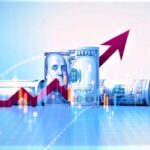Australian dollar remained weaker due to risk aversion following Donald Trump’s attempted assassination.
The Australian Dollar (AUD) fell for the second consecutive session on Tuesday. The AUDUSD pair falls as the US Dollar (USD) recovers slightly, possibly due to increasing risk aversion following former US President Donald Trump’s attempted assassination on Saturday. Investors are also looking ahead to the United States’ June retail sales. data, which will be available later today, for more insights.
The AUDUSD pair may be limited in its fall as continuously strong inflation compels the RBA to retain its hawkish stance.
The AUDUSD pair continues near its highs as speculation rises that the Reserve Bank of Australia (RBA) would delay joining the global rate-cutting cycle or perhaps boost interest rates again. Australia’s persistently high inflation has prompted the RBA to adopt a hawkish posture. In contrast, falling US inflation boosted expectations for a Federal Reserve rate drop in September.
The FedWatch Tool from CME Group predicts a 25-basis-point drop in September at 85.7%, up from 71.0% the previous week.
The US Dollar (USD) may limit its gains due to growing expectations that the US Federal Reserve may decrease borrowing prices. According to CME Group’s FedWatch Tool, the chance of a 25-basis-point rate drop at the September Fed meeting has risen from 71.0% a week ago.
Daily Market Movers: The Australian dollar falls due to a risk-off mood.
Fed Chair Jerome Powell stated on Monday that the three US inflation readings this year “add somewhat to confidence” that inflation is on track to hit the Fed’s target in a sustainable manner, implying that a turn toward interest rate decreases is not far off.
According to Fed Bank of San Francisco President Mary Daly, inflation is slowing, which increases confidence that it will reach 2%. However, Daly noted that additional information is required before reaching a rate decision.
In China, a close trade partner of Australia, Gross Domestic Product (GDP) increased by 4.7% year-on-year in the second quarter, compared to a 5.3% rise in the first quarter and an estimated 5.1%.
The National Bureau of Statistics (NBS) said that China’s economy remained relatively stable in the first half of the year, with H1 GDP growth of +5.0% year on year. Looking ahead, the NBS noted the increased foreign uncertainties and severe domestic problems that China’s economy will confront in the second half of the year.
US President Joe Biden addressed the nation from the White House.
US President Joe Biden addressed the nation from the White House on Monday, condemning all forms of political violence and calling for togetherness, according to CNBC. Biden said that “it’s time to cool it down” and mentioned not only the weekend attack on Trump, but also the danger of election-year violence on numerous fronts.
China’s retail sales (YoY) grew by 2.0% in June, falling short of the predicted 3.3% and trailing May’s 3.7%. Meanwhile, For the same period, the country’s industrial production increased by 5.3% year on year, exceeding expectations of 5.0% but falling slightly short of May’s 5.6%.
On Thursday, data indicated that the US Core Consumer Price Index (CPI), which excludes volatile food and energy costs, increased by 3.3% year on year in June, compared to 3.4% in May and the same forecast. Meanwhile, the core CPI rose by 0.1% month on month, compared to the predicted and prior figure of 0.2%.









